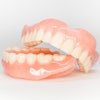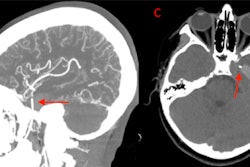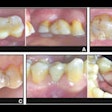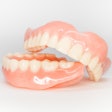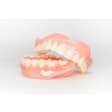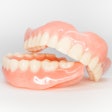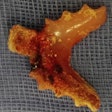Patients who experience dental anxiety and smoke may be more likely to require procedures on abutment teeth, increasing the risk of removable partial denture (RPD) failure. This study was recently published in the Journal of Prosthetic Dentistry.
Additionally, patients with maxillary partial dentures or those without a cast metal framework may be at greater risk of denture failure, the authors wrote.
"Patients who smoked, experienced dental anxiety, received maxillary partial dentures, or those without a cast metal framework exhibited an increased risk of requiring major procedures on the abutment teeth, leading to RPD failure,” wrote the authors, led by Dr. Joseph Curtis, MS, of the University of Iowa College of Dentistry (J Prosthet Dent, March 20, 2025).
This retrospective analysis analyzed electronic health records from 4,941 adult patients, covering 7,529 patient arches between 2009 and 2024. RPD treatment failure was defined as the need for any major procedure on a tooth adjacent to a treated edentulous span, the study's authors wrote.
Major procedures included endodontic treatment, periodontal surgery, extractions, or indirect restorations. Additionally, receiving a complete denture or a new RPD on the same arch was also considered a failure. The time to failure was measured from the RPD placement date to the first recorded failure or last follow-up.
Among the arches that failed (24.2%), the average time to failure was 33 months.
In the multivariable model, several factors were significantly associated with RPD failure, including Kennedy classification without distal extension (hazard ratio [HR] = 1.23, p < .001), older age (HR = 1.01, p < .001), male (HR = 1.17, p = .008), maxillary arch (HR = 1.6, p < .001), lack of insurance (HR = 0.78, p < .001), cast metal framework (HR = 0.55, p < .001), tobacco use (HR = 1.21, p = .002), and dental fear (HR = 1.26, p = .003), they wrote.
In the final multivariable model, only age, male sex, non-distal extension Kennedy classification, tobacco use, dental anxiety, and maxillary arch remained significantly associated with RPD failure. However, none had a hazard ratio exceeding 2, and most, except for the maxillary arch (HR = 1.6), had hazard ratios below 1.5. While statistically significant, these associations have limited clinical relevance due to their minimal impact.
The study had limitations. Additional factors that may have influenced RPD survival, such as occlusion, remaining teeth, and oral hygiene, were not available for inclusion in this study the authors added.
"The findings should contribute valuable insights to the existing literature on the prognosis of RPDs, providing guidance for clinicians in their decision-making processes," they wrote.




